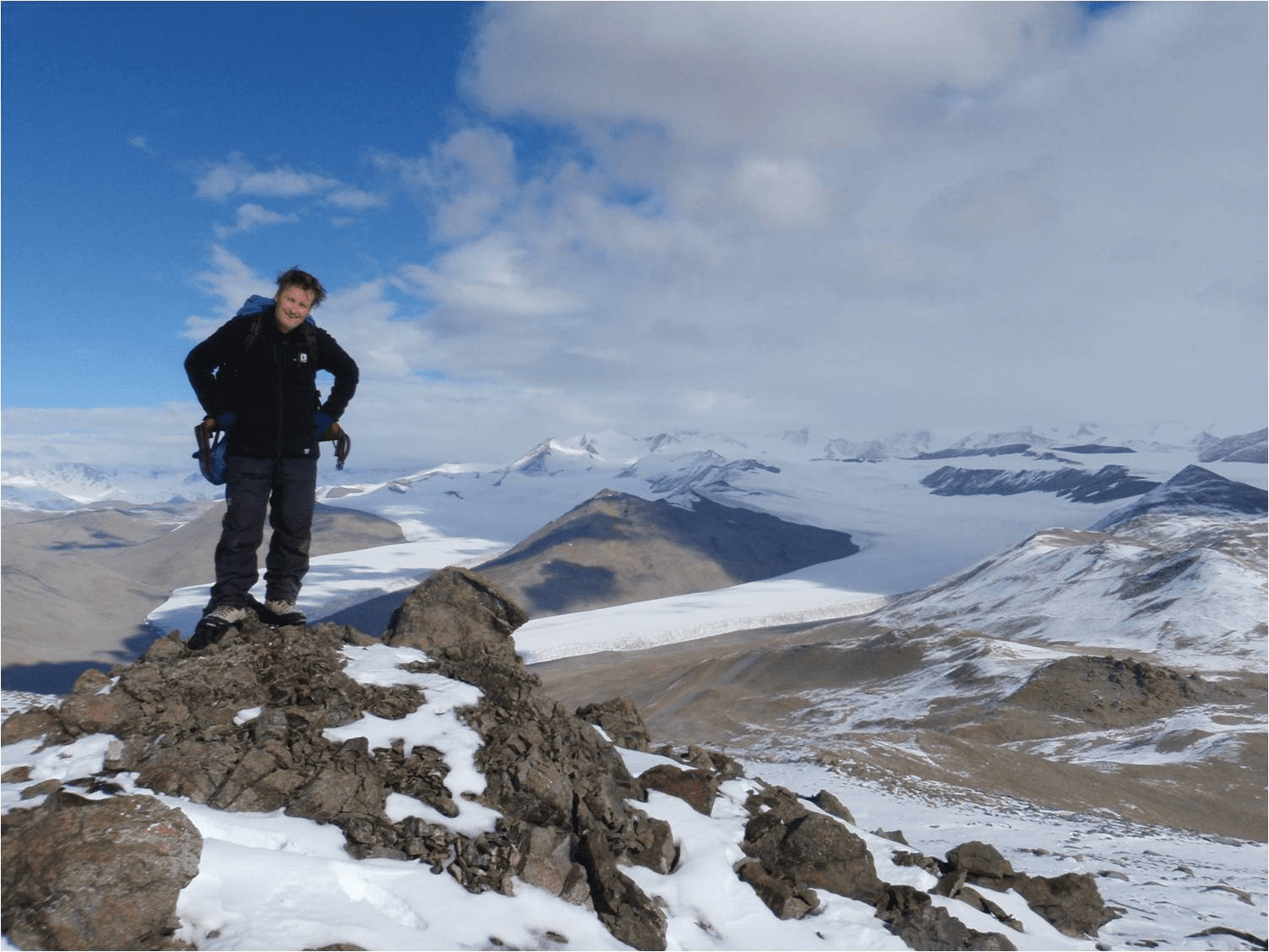Antarctica might look like a frozen desert populated only by penguins on shore leave, but parts of it are ice-free. More than a century ago, explorers were surprised to learn that while life may not thrive there, it survives in the form of algae, bacteria, and even small animals such as springtails. These creatures’ ancestry goes back to the forests of Gondwana, before the circum-Antarctic Current.
This raises the question of how these ecosystems survived the ice ages, when we know that many of the outcroppings on which they now live were covered in thick ice for tens of thousands of years. A new report by Dr Mark Stevens of the South Australian Museum and Professor Andrew Mackintosh of Monash University says that the solution lies in isolated rocky outcrops called nunataks.
Previous explanations for the survival of springtails and their food supply often relied on geothermal springs. However, Stevens and Mackintosh noted that such sites seldom stay warm long enough to last through a 100,000-year glacial period.
Moreover, such Antarctic Winterfells are few and far between. Comparisons between the genetics of species from different parts of Antarctica suggest these lifeforms have not migrated far since the Ice Age ended, with most sticking closely to their local patch, few of which had nearby volcanic activity.
Stevens and Mackintosh investigated an alternative theory; that steep rocky peaks remained ice-free through the last ice age, allowing life to cling on.

Dr Mark Stevens standing on a nunatak (rocky outcrop) overlooking Miers Valley, Antarctica, where much of the research was done. Image Credit: Stephen Pointing
To test this, the pair used cosmogenic isotope dating, which studies how long rocks have been exposed to radiation from space. The technique has proven useful in recent years in identifying when glaciers retreated from specific locations. When ice sheets (or sediments) covered the rocks, the radiation couldn’t change some atoms into radioactive isotopes. By measuring the abundance of these isotopes, the length of exposure can be calculated.
Stevens and Mackintosh found many nunataks remained free of ice throughout the Ice Age.
“Today every known species of springtail in Antarctica is found within 100 km [62 miles] of the ice-free areas that remained during the last glacial maximum,” Mackintosh said in a statement sent to IFLScience. “These species are also completely absent in current-day ice-free regions that would have been covered in ice.”
Being close to the poles, and often 2 kilometers (1.2 miles) above sea level, these spots are bitterly cold in the Antarctic winter even today, let alone twenty thousand years ago.
Nevertheless, algae managed to photosynthesize in these conditions in summer and survive through winter. Springtails fed directly on the algae, or on bacteria breaking down primary producers. The arthropods are capable of desiccating their bodies when food is scarce and surviving at temperatures of -80°C (112°F) at least.
Stevens told IFLScience that when summer comes, nunatak soils can warm as high as 30°C (86°F) and springtails flourish.

Springtails from Dronning Maud Land, Antarctica. Springtail populations are very localized and genetically distinct from those in nearby locations. Image Credit: Cyrille D’Haese
Survival depended on staying close to the edge of the snowline for summer meltwater – as the Ice Age ended, faster melting may have helped species disperse into newly exposed territories.
The findings could have important implications both forwards and back in time. The work might explain how life survived the Snowball Earth era some 650 million years ago. Stevens told IFLScience; “Of course where those refuges were would be impossible to know now,” making the connection impossible to verify. Nevertheless, nunataks offer a possible solution to what previously seemed inexplicable to many.
Looking forward, Stevens told IFLScience the springtails are likely to benefit initially from rising temperatures, including the accompanying increase in water. However, over time, many existing habitats will be inundated. Stevens expects; “It will happen too quickly, and they won’t be able to move with the habitats they need.”
The study is published open access in Biology Letters
Source Link: How Ancient Gondwanan Life Survived Ice Ages In Antarctica